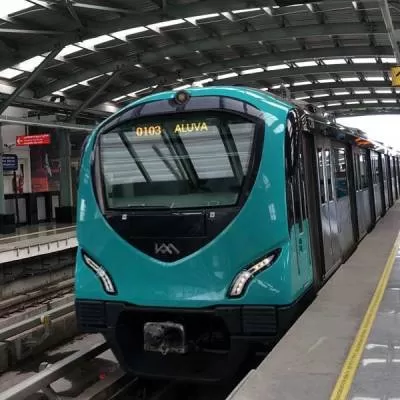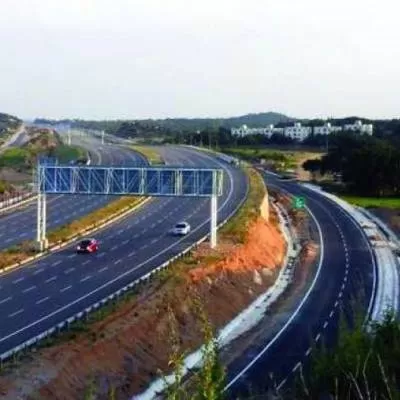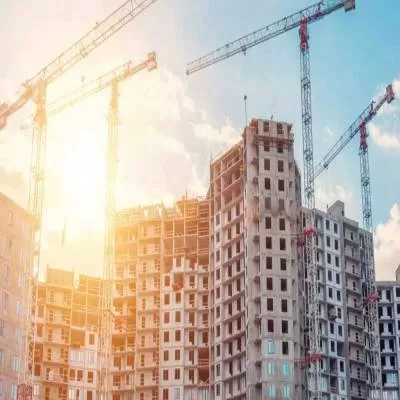- Home
- Real Estate
- Fire Alarm!
Fire Alarm!
The fire outbreak in Carlton Towers, Bengaluru has necessitated a relook at the existing fire safety norms in the country, writes Shubhangi Bidwe.
The recent outbreak in Carlton Towers in Bengaluru, which killed nine people and injured 60 others, has once again exposed the apathy in adhering to safety regulations in many hi-rises in the country.
What went wrong?
Dwelling on what exactly went wrong at the Carlton Towers, KP Dominic, General Secretary, Fire and Security Association of India, says, “The primary reason behind the spreading of the fire was lack of basic fire infrastructure in the building. Firstly the fire equipment in the building were not maintained properly. It is mandatory for all buildings to conduct a periodic inspection of all their security systems, which was not done in this case. The fire extinguishers, fire sprinklers and fire alarms were not in working conditions.”
“One of most important bottlenecks in implementation of fire safety is lack of knowledge of safety regulations amongst the people,” he adds. “They are not aware of the safety rules laid down by the National Building Code, which causes them to flout most of the norms.”
Also, it is very important to have dedicated fire officers and maintenance engineers in a building for maintenance of a fire safety plan. This was absent in case of Carlton Towers, which caused a delay in controlling the fire.
'There was lack of proper ventilation facilities in the building, which caused the smoke to spread. As a result, more people died due to inhaling smoke than fire,' says Dominic. “The Carlton Towers contained a stock of 11 gas cylinders, which if exploded would have further caused thousands of death. This was hara-kiri.”
Safety first
It is mandatory for all high-rises to conduct mock drills once in three months or at least once a year, which according to Dominic, 'was not done in case of Carlton Towers.'
'In fact not many builders or occupants come forward for mock drills or inspections to ensure that their buildings are fire-safe,' he says. As a result, the fire department has no clear idea of how many high-rises in the city adhere to the fire safety norms, as they lack the power to inspect the premises.
Safety rules mandate that it should take just three minutes for people to escape when a fire breaks out in any high-rise building. 'It is necessary that the emergency exit doors are maintained properly,' says, Ashok Kumar, Proprietor, Hermes Steel Enterprises Pvt Ltd, which offers vertical fire escape chute system for independent external escape. These fire escape chutes operate on the principle of controlled sliding down on a chute made of fire retardant material. The system assures the user of a safe descent from any height at a descent rate of about 2 m per second. Where tall structures have rescue platforms, such chutes can be installed on each such platform for sending evacuees from one platform to the next till they reach the ground.
But many high-rise structures in Bengaluru do not facilitate quick evacuation. The high-rise buildings on the Airport Road, MG Road and cantonment areas are the major offenders. Even the government-owned high-rise buildings are no exception. Carlton Towers too had no evacuation facilities.
Preventive Measures:
In order to avoid such accidents in the future, Dominic advocates certain norms to be followed by all developers.
1. First and foremost - fire safety should be taught as a subject in schools. Students should be trained to overcome such disasters.
2. There should be periodic inspection of all the fire systems in the buildings.
3. There should be a fire compartment in every building to deal with such disasters.
4. Mock drills should be conducted regularly
5. All glass enclosed buildings should have smoke infraction systems.
6. All buildings should have dampers which control the smoke from travelling from one place to another.
- Construction
- Update
- Portal
- World
- April
- Magazine
- 2010
- India
- Fire
- Carlton Towers
- Bengaluru
- safety norms
- KP Dominic
- Fire & Security Association
- fire infrastructure
- fire equipment
- security systems
- extinguishers
- sprinklers
- alarms
- fire officers
- maintenance
- engineers
- ventilation
- mock drills
- Ashok Kumar
- Hermes Steel Enterprises
- evacuation
The fire outbreak in Carlton Towers, Bengaluru has necessitated a relook at the existing fire safety norms in the country, writes Shubhangi Bidwe. The recent outbreak in Carlton Towers in Bengaluru, which killed nine people and injured 60 others, has once again exposed the apathy in adhering to safety regulations in many hi-rises in the country. What went wrong? Dwelling on what exactly went wrong at the Carlton Towers, KP Dominic, General Secretary, Fire and Security Association of India, says, “The primary reason behind the spreading of the fire was lack of basic fire infrastructure in the building. Firstly the fire equipment in the building were not maintained properly. It is mandatory for all buildings to conduct a periodic inspection of all their security systems, which was not done in this case. The fire extinguishers, fire sprinklers and fire alarms were not in working conditions.” “One of most important bottlenecks in implementation of fire safety is lack of knowledge of safety regulations amongst the people,” he adds. “They are not aware of the safety rules laid down by the National Building Code, which causes them to flout most of the norms.” Also, it is very important to have dedicated fire officers and maintenance engineers in a building for maintenance of a fire safety plan. This was absent in case of Carlton Towers, which caused a delay in controlling the fire. 'There was lack of proper ventilation facilities in the building, which caused the smoke to spread. As a result, more people died due to inhaling smoke than fire,' says Dominic. “The Carlton Towers contained a stock of 11 gas cylinders, which if exploded would have further caused thousands of death. This was hara-kiri.” Safety first It is mandatory for all high-rises to conduct mock drills once in three months or at least once a year, which according to Dominic, 'was not done in case of Carlton Towers.' 'In fact not many builders or occupants come forward for mock drills or inspections to ensure that their buildings are fire-safe,' he says. As a result, the fire department has no clear idea of how many high-rises in the city adhere to the fire safety norms, as they lack the power to inspect the premises. Safety rules mandate that it should take just three minutes for people to escape when a fire breaks out in any high-rise building. 'It is necessary that the emergency exit doors are maintained properly,' says, Ashok Kumar, Proprietor, Hermes Steel Enterprises Pvt Ltd, which offers vertical fire escape chute system for independent external escape. These fire escape chutes operate on the principle of controlled sliding down on a chute made of fire retardant material. The system assures the user of a safe descent from any height at a descent rate of about 2 m per second. Where tall structures have rescue platforms, such chutes can be installed on each such platform for sending evacuees from one platform to the next till they reach the ground. But many high-rise structures in Bengaluru do not facilitate quick evacuation. The high-rise buildings on the Airport Road, MG Road and cantonment areas are the major offenders. Even the government-owned high-rise buildings are no exception. Carlton Towers too had no evacuation facilities. Preventive Measures: In order to avoid such accidents in the future, Dominic advocates certain norms to be followed by all developers.1. First and foremost - fire safety should be taught as a subject in schools. Students should be trained to overcome such disasters. 2. There should be periodic inspection of all the fire systems in the buildings.3. There should be a fire compartment in every building to deal with such disasters.4. Mock drills should be conducted regularly5. All glass enclosed buildings should have smoke infraction systems.6. All buildings should have dampers which control the smoke from travelling from one place to another.























